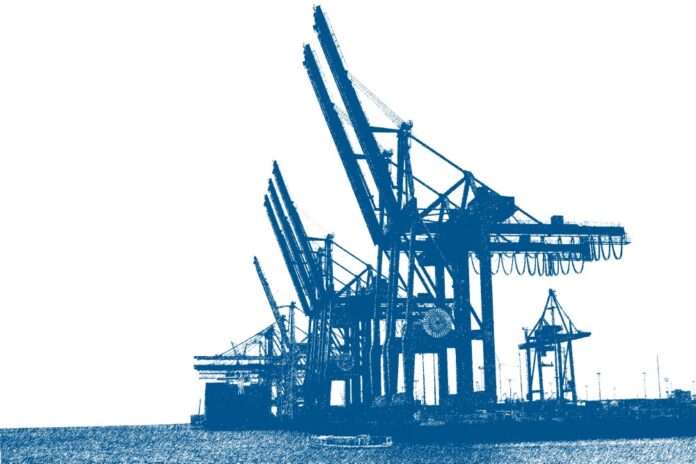
Does automation of container terminals improve productivity? It all depends, finds a recent report by the OECD’s transport minister conference, the International Transport Forum[ds_preview]
The ITF report shows which terminal activities have been automated in different ports and which additional activities might be automated in the future. It [ds_preview]assesses the effects of automation on port performance, handling costs and safety, and the extent to which automation projects have achieved their objectives. Finally, the report identifies policy issues related to container terminal automation.
Fully automated container terminals do not yet exist, the report states. Across the world, 53 container terminals are now automated to a certain degree. This represents around 4% of global capacity. Most automated systems are deployed in the container yard. Only a few terminals have automated the transport between quay and yard. No terminal has completely automated quay cranes.
»Automated ports are generally not more productive than their conventional counterparts«
The ITF-report found that »automated ports are generally not more productive than their conventional counterparts«. Port organisation and specialisation, geographical location and port size are more important determinants of port performance than automation. This explains the limited automation of container ports to date.
Comparatively, high handling costs also make the case for automation not entirely convincing. Although automation reduces labour costs, capital costs are higher as automated equipment is more expensive than manually operated equipment. Whether or not automation has led to lower overall handling costs is place-specific. It depends significantly on local labour costs and on the degree to which machines replace port labour.
Finally, it is often assumed that automation improves the safety and health of terminal workers. Whilst automating processes that expose workers to risk is clearly beneficial, there is so far little robust empirical data to demonstrate significant overall improvement in outcomes in practice.
»Automated systems for inter-terminal transport have not been implemented because of their limited feasibility«
A few container terminals have recently introduced remote quay-crane operations. Instead of operating from a cabin on the crane, the operator works from a distance in an operations centre on the port premises. This innovation has yielded mixed results so far in terms of productivity.
Automated systems for inter-terminal transport have been discussed but have not been implemented because of their limited feasibility. The port of Rotterdam – Europe`s biggest seaport – sought to introduce an automated system for inter-terminal transfers but finally decided against it because of the costs and financial risks.
Container terminal automation appears to offer benefits only under certain conditions and thus for a limited group of terminals. Container terminals that face a relatively stable market with guaranteed throughput are more suitable for high levels of automation because of their regular cargo flows. In contrast, terminals with fluctuating throughput are better served by less automation as this maintains greater flexibility. Container volumes are more volatile in transhipment terminals, so more flexibility and low levels of automation are advantageous. Gateway terminals, by contrast, generally have a certain level of captive container volumes, so they tend to be more suitable for automation.
Consolidation of carriers, the market power of alliances and the rise of mega-ships have increased peak loads, volatility of cargo flows, and transhipment. These developments require terminals to be more flexible to assure ship-to-ship connections. They make the case for automation less convincing and flexible arrangements for port labour more appropriate, provided enough labour is available. Yet these factors are sometimes absent from policy considerations.
The costs and benefits of port automation projects are rarely spelt out. Automation projects can deliver clear benefits under some assumptions but not under others. No clarity on assumptions means that stakeholders will not be able to assess the merits of automation projects. Bigger ships do not necessarily need automation, and automation is not required to reduce emissions. Evaluations of port automation projects are not commonly made public and policy making internationally would benefit if more were released.
Port automation projects are regularly the subject of social conflict in ports. When the benefits of automation are ambiguous, some stakeholders will interpret any push for it as an attempt to diminish dockworkers’ unions. Polarisation between the positions of employers and employees has resulted in cases of automation in the face of opposition from port workers but also attempts by legislators to restrict automation. At the same time, there are instances of unions, port authorities and terminal operators cooperating constructively to introduce automation under conditions considered appropriate by all involved.
»Port operators should put more focus on flexible labour arrangements, as the current situation in container shipping requires flexibility«
Various port automation projects have shared the benefits of automation with port workers. This has taken the form of wage increases, early retirement programmes for older workers or other benefits, often part of a package negotiated with the introduction of automation. When labour is locally scarce, workers displaced by automation are likely to be rapidly re-employed elsewhere in the economy. Costs such as social security expenditures (in case of redundancies) and tax revenues foregone (when machines replace port workers that cannot be reintegrated into the labour market), which are passed on to other parts of the public sector, are naturally disregarded by most port stakeholders, but they do need to be taken into account by government.
The OECD-group of transport experts recommends to put more focus on flexible labour arrangements, as the current situation in container shipping requires flexibility to deal with peaks and troughs related to larger ships and increased volatility of container flows. With present technology, automated terminals are not particularly well suited to deal with these requirements. Flexible labour arrangements, such as port labour pools, make it possible to vary labour inputs depending on the container volumes to be handled at any given moment. Governments should consider how such flexible port labour arrangements can be facilitated.
»Port operating companies should address the social costs of automation«
The ITF recommends also to better identify the costs and benefits of port automation projects. Terminal operators, trade unions and governments should have access to assessments of costs and benefits of port automation project proposals and their underlying assumptions. This knowledge guarantees that all stakeholders can assess the merits of the automation project based on the same evidence. Any evaluations of port automation projects should be made public. Findings will help policy makers to identify under which conditions automation could be effective.
Port operators should stimulate social dialogue and co-operation between employers and workers on port automation, ITS says. Cooperation between port stakeholders implies a social dialogue between employers, workers, and government representatives on the economics of cargo handling in ports. This should cover wider developments in container shipping that affect the desirability of automation, such as industry consolidation and ever-larger ships, as well as automation itself. Agreements to share productivity gains with workers can also facilitate the introduction of automation.
Last, but not least, port operating companies should address the social costs of automation. Analyses of port automation projects should include estimations of societal costs, including impacts on local employment and tax revenues. Governments need this information even if issues related to automation are much broader than the port sector and subject to economy-wide policies on the balance between the taxation of capital and labour. ED














